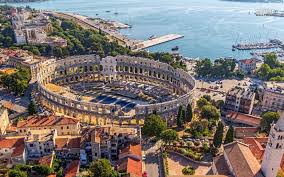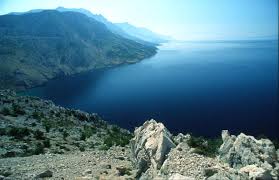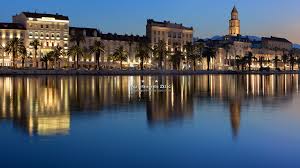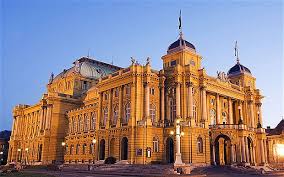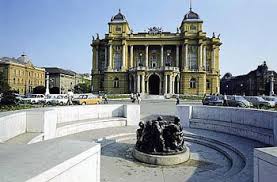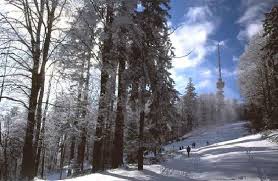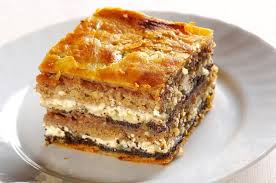Geography
A unitary state, Croatia is a republic governed under a parliamentary system. The International Monetary Fund classified Croatia as an emerging and developing economy, and the World Bank identified it as a high-income economy. Croatia is a member of the European Union (EU), United Nations (UN), the Council of Europe,NATO, the World Trade Organization (WTO) and a founding member of the Union for the Mediterranean. As an active participant in the UN peacekeeping forces, Croatia has contributed troops to the NATO-led mission in Afghanistan and took a non-permanent seat on the UN Security Council for the 2008–2009 term.
The service sector dominates Croatias economy, followed by the industrial sector and agriculture. Tourism is a significant source of revenue during the summer, with Croatia ranked the 18th most popular tourist destination in the world. The state controls a part of the economy, with substantial government expenditure. The European Union is Croatias most important trading partner. Since 2000, the Croatian government has invested in infrastructure, especially transport routes and facilities along thePan-European corridors. Internal sources produce a significant portion of energy in Croatia; the rest is imported.
Population
Transport
Transport in Croatia relies on several main modes, including transport by road, rail, water and air. Road transport incorporates a comprehensive network of state, county and local routes augmented by a network of highways for long-distance travelling. Water transport can be divided into sea, based on the ports of Rijeka, PloÄe, Split and Zadar, and river transport, based on Sava, Danube and, to a lesser extent, Drava. Croatia has 68 airports, five of which are international.
Railway: The Croatian railway network is classified into three groups: railways of international, regional and local significance. The most important railway lines follow Pan-European corridors V (branch B) and X, they connect at Zagreb with each other. There are connections to the railway networks of Slovenia, Hungary, Bosnia and Herzegovina and Serbia.
The railways need to be modernized because since the disintegration of Yugoslavia there have been hardly any investment in railway infrastructure. Many important routes are not electrified and are only single track traffic around bends. Some improvements have been made in the last ten years. A result of this has been an increase in the maximum speed on the railway line on the Pan-European Corridor X, from the Slovenian border via Zagreb, Novska, Vinkovci to the Serbian border (lines M101 through M105). In places the lines speed limit has been raised from 80 km/h (50 mph) to 120 km/h (75 mph), and plans have been made to raise this further to 160 km/h (100 mph) on certain sections.
Highway: From the time of Napoleon and building the Louisiana road, the road transport in Croatia has significantly improved, topping most European countries. Croatian highways are widely regarded as being one of the most modern and safe in Europe. This is because the largest part of the Croatian motorway and expressway system (autoceste and brze ceste, resp.) has been recently constructed (mainly in the 2000s), and further construction is continuing. The motorways in Croatia connect most major Croatian cities and all major seaports. The two longest routes, the A1 and the A3, span the better part of the country and the motorway network connects most major border crossings.
Airport: There are international airports in Zagreb, Zadar, Split, Dubrovnik and Rijeka (on the island of Krk). Recently, Osijek Airport in Slavonia has been renovated for regional traffic. It is also being considered to revitalize the Pula Airport (Istria) as a destination for low cost airlines.
Currently, the following low cost airlines are flying to Croatia: EasyJet, Flyglobespan, Germanwings, TUIfly, Ryanair, Thomson and Wizz Air. Major established companies that fly to Croatia include the domestic Croatia Airlines (member of the Star Alliance), Air France, Lufthansa and British Airways. Seasonal intercontinental flights also operate from and to Croatia.
Greetings
|
English |
Hrvatski (Croatian) |
|
Reply to How are you? |
Hvala, dobro. A ti? (inf) |
|
Kako se zoveš? (inf) |
|
|
Odakle si? (inf) |
|
|
Lijep ti dan �elim! (inf) |
|
|
Mo�eš li priÄati sporije? (inf) |
|
|
Do you speak Croatian? |
Govoriš li hrvatski? (inf) |
|
Yes, a little |
|
|
How do you say ... in Croatian? |
|
|
Reply to thank you |
|
|
Bi li htio plesati sa mnom? (>m) |
|
|
Ozdravi brzo! (inf) |
|
|
Stani! |
|
Sights
Cuisine
Posters
Map
Itineraries
| Sr. No. | Itinerary Name | File |






